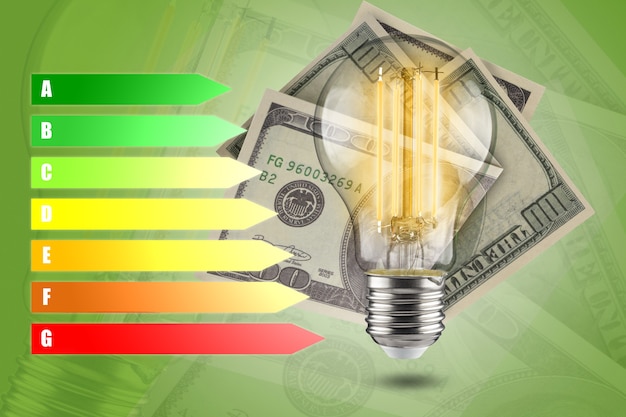Energy Assistance Programs: Your Guide to Lower Utility Bills

Energy Assistance Programs, primarily government-funded, offer critical support to individuals and families struggling to afford their utility bills, ensuring access to essential services like heating and electricity.
Are you struggling to keep up with your energy bills? You’re not alone. Fortunately, there are energy assistance programs designed to help lower your utility bills and ease your financial burden. These programs, often supported by the government, can provide crucial assistance to those who qualify.
Understanding Energy Assistance Programs
Energy assistance programs are designed to help low-income households manage their energy costs. These programs recognize that access to energy is essential for health and safety, and they aim to ensure that everyone can afford to heat their homes in the winter and cool them in the summer.
These programs are typically funded by federal and state governments, as well as utility companies and charitable organizations. They offer a range of services, including financial assistance, energy conservation education, and weatherization assistance.
Types of Assistance Available
There are several types of energy assistance programs available, each with its own eligibility requirements and benefits. Understanding these different types can help you determine which program is the best fit for your needs.
- Financial Assistance: Provides direct payments or credits to help cover energy bills.
- Energy Conservation Education: Offers tips and resources on how to reduce energy consumption and lower bills.
- Weatherization Assistance: Provides home improvements to make homes more energy-efficient, such as insulation and window replacements.
Who is Eligible?
Eligibility for energy assistance programs is typically based on income and household size. However, other factors, such as age, disability, and energy burden, may also be considered. The specific eligibility requirements vary by program and location.
Generally, programs target low-income households, but some may also be available to moderate-income families who are facing a temporary financial hardship. It’s important to check the specific eligibility requirements for each program to see if you qualify.

In conclusion, energy assistance programs are vital resources for individuals and families struggling to afford their energy bills. Understanding the types of assistance available and the eligibility requirements can help you access the support you need to stay safe and comfortable in your home.
The Low Income Home Energy Assistance Program (LIHEAP)
The Low Income Home Energy Assistance Program (LIHEAP) is a federally funded program that helps low-income households with their energy bills. LIHEAP is the most well-known and widely available energy assistance program in the United States.
LIHEAP provides assistance with heating, cooling, and energy crisis situations. The program is administered by states, tribes, and territories, and each has its own eligibility requirements and benefit levels.
How LIHEAP Works
LIHEAP provides grants to states, which then distribute the funds to eligible households. The amount of assistance provided varies depending on factors such as income, household size, energy costs, and climate.
LIHEAP assistance can be used to pay for heating bills in the winter, cooling bills in the summer, or to address energy crisis situations, such as a disconnection notice or a fuel shortage.
- Heating Assistance: Helps with the cost of heating fuel, such as natural gas, oil, or electricity.
- Cooling Assistance: Helps with the cost of cooling bills during the summer months.
- Crisis Assistance: Provides emergency assistance to households facing a disconnection or fuel shortage.
Applying for LIHEAP
To apply for LIHEAP, you will need to contact your local LIHEAP agency. Each state has its own application process and eligibility requirements. You can find contact information for your local LIHEAP agency by visiting the LIHEAP website or calling the LIHEAP hotline.
When applying for LIHEAP, you will need to provide documentation of your income, household size, and energy bills. You may also need to provide proof of citizenship or legal residency.

In short, LIHEAP is a critical resource for low-income households struggling to afford their energy bills. By providing financial assistance for heating, cooling, and energy crisis situations, LIHEAP helps ensure that everyone has access to safe and affordable energy.
State-Specific Energy Assistance Programs
In addition to LIHEAP, many states offer their own energy assistance programs. These state-specific programs can provide additional assistance to households that are not eligible for LIHEAP or that need more help than LIHEAP can provide.
State energy assistance programs vary widely in terms of eligibility requirements, benefit levels, and services offered. Some programs are similar to LIHEAP, while others offer unique forms of assistance.
Examples of State Programs
Here are a few examples of state-specific energy assistance programs:
California’s CARE Program: The California Alternate Rates for Energy (CARE) program provides a discount on energy bills for low-income households.
- Provides a discount on monthly energy bills.
- Eligibility based on income and household size.
- Administered by utility companies.
New York’s HEAP: New York’s Home Energy Assistance Program (HEAP) provides assistance with heating bills and energy crisis situations.
- Similar to LIHEAP but with additional state funding.
- Offers assistance with heating bills, cooling assistance, and energy crisis assistance.
- Eligibility based on income and household size.
Texas’s CEAP: The Comprehensive Energy Assistance Program (CEAP) provides assistance with energy bills and weatherization services.
- Offers assistance with energy bills and weatherization services.
- Eligibility based on income and household size.
- Administered by local community action agencies.
Checking your state’s specific offerings will help you to determine if there are ways to obtain additional aid in paying for energy costs. Many of these programs can be found online through your state’s government website.
Basically, state-specific energy assistance programs can provide valuable additional support to households struggling to afford their energy bills. These programs vary widely, so it’s important to research the programs available in your state and determine if you are eligible.
Utility Company Assistance Programs
Many utility companies offer their own energy assistance programs to help customers who are struggling to pay their bills. These programs are typically funded by the utility company itself or by donations from customers.
Utility company assistance programs can provide a range of services, including financial assistance, payment plans, and energy conservation education.
Types of Utility Company Programs
Here are some common types of utility company assistance programs:
Payment Assistance: Provides direct payments or credits to help cover energy bills.
- Offers financial assistance to low-income customers.
- May provide a one-time payment or ongoing credits.
- Eligibility based on income and hardship.
Payment Plans: Allows customers to spread out their energy bills over a longer period of time.
- Offers flexible payment options to help customers manage their bills.
- May allow customers to pay off arrearages over time.
- Eligibility may be based on income and payment history.
Energy Conservation Education: Offers tips and resources on how to reduce energy consumption and lower bills.
- Provides information on energy-efficient appliances and practices.
- May offer home energy audits to identify energy-saving opportunities.
Contacting your utility company directly is the best way to learn about the programs that they currently offer. The agents will be able to tell you about the requirements and options for applying.
All things considered, utility company assistance programs can provide valuable support to customers struggling to afford their energy bills. These programs offer a range of services, including financial assistance, payment plans, and energy conservation education. Contacting your utility company is the best way to learn about the programs available to you.
Energy Conservation and Weatherization Programs
In addition to financial assistance programs, there are also energy conservation and weatherization programs that can help you lower your energy bills. These programs focus on making your home more energy-efficient, which can reduce your energy consumption and save you money.
Energy conservation programs offer tips and resources on how to reduce your energy consumption, while weatherization programs provide home improvements to make your home more energy-efficient.
Energy Conservation Tips
Here are some simple energy conservation tips that you can implement in your home:
- Turn off lights when you leave a room.
- Unplug electronics when you’re not using them.
- Use energy-efficient light bulbs.
Weatherization Assistance
Weatherization programs provide home improvements to make homes more energy-efficient. These improvements can include:
- Insulation: Adding insulation to walls, attics, and basements can reduce heat loss in the winter and heat gain in the summer.
- Sealing air leaks: Sealing air leaks around windows, doors, and other openings can prevent drafts and reduce energy loss.
- Window and door replacements: Replacing old, inefficient windows and doors with energy-efficient models can significantly reduce energy consumption.
Weatherization assistance programs can significantly reduce your energy bills by making your home more energy-efficient. Contact your local community action agency or energy office to learn more about weatherization programs in your area.
Overall, energy conservation and weatherization programs are effective ways to lower your energy bills and make your home more comfortable. By implementing simple energy conservation tips and participating in weatherization programs, you can save money and reduce your environmental impact.
Navigating the Application Process
Applying for energy assistance programs can seem daunting, but it doesn’t have to be. By understanding the application process and being prepared with the necessary documentation, you can increase your chances of being approved for assistance.
The application process varies depending on the program and location, but there are some general steps that are typically involved.
Steps to Take
Here are some steps to take when applying for energy assistance programs:
-
Research available programs: Before you apply, research the energy assistance programs available in your area and determine which ones you are eligible for.
-
Gather required documentation: Collect all of the required documentation, such as proof of income, household size, and energy bills.
-
Complete the application: Fill out the application form completely and accurately.
Common Mistakes to Avoid
Here are some common mistakes to avoid when applying for energy assistance programs:
Incomplete applications: Make sure to fill out all sections of the application form and provide all required documentation.
Inaccurate information: Provide accurate information about your income, household size, and energy bills. Providing false information can result in denial of benefits.
Missing deadlines: Submit your application by the deadline. Late applications may not be accepted.
In conclusion, by taking the time to research available programs, gather the required documentation, and complete the application accurately, you can increase your chances of being approved for energy assistance. Avoiding common mistakes can also help ensure that your application is processed smoothly.
| Key Point | Brief Description |
|---|---|
| 💡 LIHEAP | Federal program assisting low-income households with energy bills. |
| 🏠 State Programs | Additional aid offered by individual states to supplement federal programs. |
| 💰 Utility Assistance | Direct assistance from utility companies, including payment plans. |
| 🛠️ Weatherization | Programs to improve home energy efficiency, lowering long-term costs. |
FAQ
▼
LIHEAP, or the Low Income Home Energy Assistance Program, is a federally funded program helping low-income families with energy bills. It can cover heating, cooling, and crisis assistance.
▼
You can apply through your state’s LIHEAP agency, or by contacting your local utility company. Each program has its own application process.
▼
Typically, you need proof of income, household size, and your most recent energy bills. Some programs may require additional documentation.
▼
Yes, many states and utility companies offer their own assistance programs. Check with your local government and utility provider for more information.
▼
Yes, these programs offer home improvements like insulation and sealing leaks, reducing energy consumption and lowering your bills long-term.
Conclusion
Affording energy should not be a constant worry. By exploring and utilizing energy assistance programs and taking measures to conserve energy, you can significantly lower your utility bills. Be sure to research the options available in your area and take the necessary steps to apply. Take control of your finances and access these valuable resources today.





